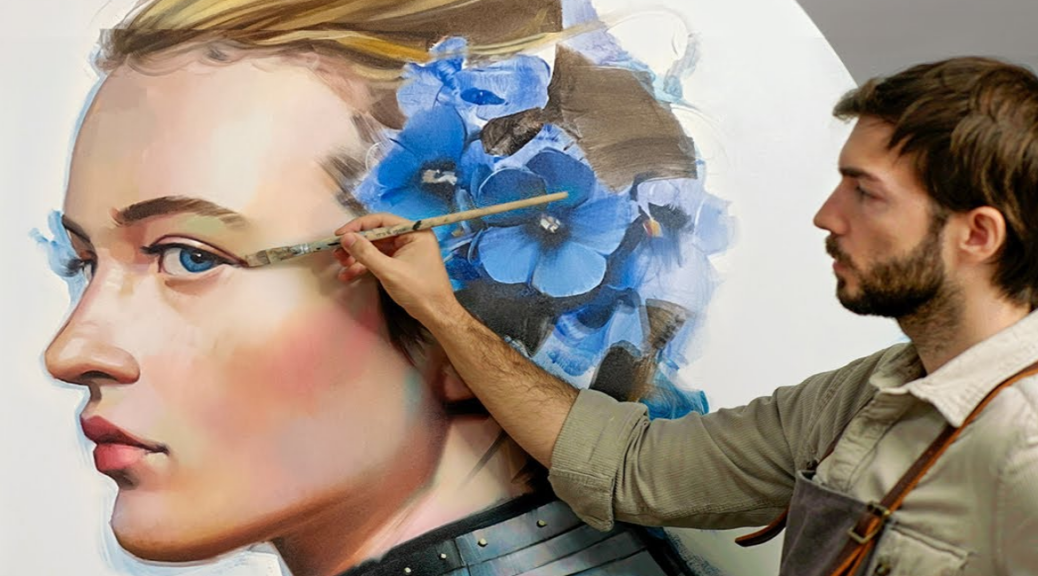Now more than ever before, the professional and amateur artist, sculptor, photographer, graphic designer and those who practice the design work of installations, can increase their opportunities to share and sell art online. It’s common practice to easily manage online platforms, that are designed for promoting high content images and text, as individuals and larger hosting sites. TheArtGuide.com offers completely free event posts that attract millions of viewers to our Feature Galleries and Feature Artist pages, of both national and international viewers.
Go From Studio to – Art Marketing in 2024
It’s important to create an identifiable brand for your art business through display and logo. Establishing a business image is simpler than you think. Start by drawing on what is already working for your unique artistic style and color palette. Website, brochures, business cards and invitations should all be consistent with those initial design choices. Brand imaging will then settle the colors, fonts, photos and language of everything you present, from printed materials and website to social media posts and banner ads. Each material promotion will strengthen your works’ intention and design statement.
Next, bring your brand to life through digital media. Having a functional and up-to-date registered website is critical to increase sales outside of your area. The two most important aspects of any website, apart from your original art and contact information, are a headshot for customers to see who they’re working with and an email sign-up-list.
It’s also good business practice and a professional commitment to submit the paperwork for registration as an LLC. The process takes a few hours and phone call or two, to your state’s business registrar, for an employer identification number (EIN). It’s an inexpensive process and you can then easily track income as a private professional, account for work costs and sales, that will solidify your reputation with a network of new contacts.
2. Carefully Choose the Art To Sell
Decide exactly what you feel others would be interested in buying, the general cost and how you’d like to present those works online or as display. There are a number of ways to retail art online, however uniformity is a reliable planning approach and key to a final sale.
The most effective art businesses sell only original artwork, which is very sought after and therefore validates a higher price point. You can also sell copywrite digital files or prints of your work to better utilize time in promoting the brand. In some cases, an established art website owner may grow income by selling the work of others to increase their own site SEO interactions and personal sales. However, proceed with caution, selling art can be very tricky to navigate both the artist and new clients. Stay with a set price and try to be consistent.
One of the best ways to reach new customers is to display art at unexpected venues. Here are just a few options.
- Research galleries locally and nationally. Which one sells your style of work? Make and send “personal” calls and emails with images.
- POP-UP’s are an inexpensive venue for quick sales that create a network through personal contact and interested on-lookers.
- Set up a “mini” art exhibit that at your local opera, ballet or symphony. Most fine art enthusiasts also love music and dance, and will likely enjoy a brief conversation about your work.
- Enter art contests and exhibits. This is an inexpensive and very important way to connect with industry professionals

4. Start With and Stick to a Marketing Budget
Most artists scoff at the idea of investing their funds in promotional marketing and the material; after all paint and supplies aren’t cheap! However, it’s money well invested; in adverse to creating an abundance of significant artwork that no one will experience. A good plan is to have funds allocated for a monthly or annual email marketing service. For example, TheArtGuide.com offers client emails to a a well established art affiliated client list. You can also purchase a promotional page in art catalogues, town magazines or rent a booth at an art fair. Local fairs are important in building a clientele list and will make it easy to remind those interested in your most recent works.
5. Stay Connected with Potential Clients
Remember all those people who signed up on your website or that you met while in an art event or booth you rented at that last art fair? Well, they are now potential clients!
It’s important to always stay connected with past, present and future customers using weekly emails and social media that’s a consistent low-cost venue for promotion. For example, at no cost create a Business Facebook page and use it to invite people to your art events, share photos of recent and commissioned works, post testimonials from satisfied customers and let everyone know what’s happening behind the scenes in your studio or on the road art travels. Provide video discussions of your work and process. However, on this note, only create social media accounts that you are willing to update frequently.
In today’s online market and social media, your works of art can easily have a solid business plan that is enjoyable and will generate revenue. Take just a few hours each week to focus on promotions. No matter how long you’ve been in the art world treat your work as an opportunity to learn more, expand your contact list and think creatively. Take courses on social media, sales and small business strategies; join your local chamber of commerce and networking groups; attend art and business events in your community.
When you expand your art – as a business, you will find that you can meet allies, clients and friends in the most unexpected places.
Written by TheArtGuide.com contributor, Advertising Director: Mark “Spider” Vaughn
_________________________________________________________________________



